In development Application 2: Biocompatible Polymers
Features and Properties
- Has excellent blood compatibility.
Platelet inactive, Complement inactive, Nonhemolytic
Does not coagulate blood over a long period of time, even without the additional use of anticoagulants. - Inhibits the adsorption of proteins.
- Inhibits the adsorption of microorganisms.
- Cell adhesion can be controlled by selecting the composition.
It is also possible to have both antithrombogenicity and (tissue) cellular adhesiveness.
Examples of Applications
- Coating agents for medical equipment
- Water-insoluble pharmaceutical solubilizing agents
- Drug delivery system (DDS)
- Cell culture base materials
- Cell tissue scaffolding materials
- Cancer diagnosis kits
- Adhesion prevention agents
Excellent Antithrombogenicity
Inhibits and does not activate platelet adhesion.
(Platelet-rich plasma left to stand for one hour)

Inhibition of Protein Adsorption
1. Inhibits the adsorption of blood-derived proteins.
2. Inhibits adsorption in various proteins with differing surface charges.
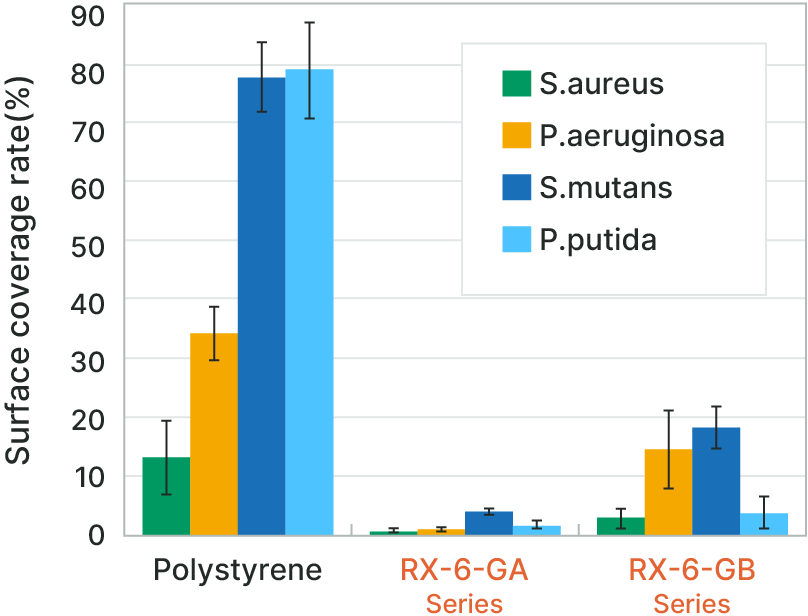
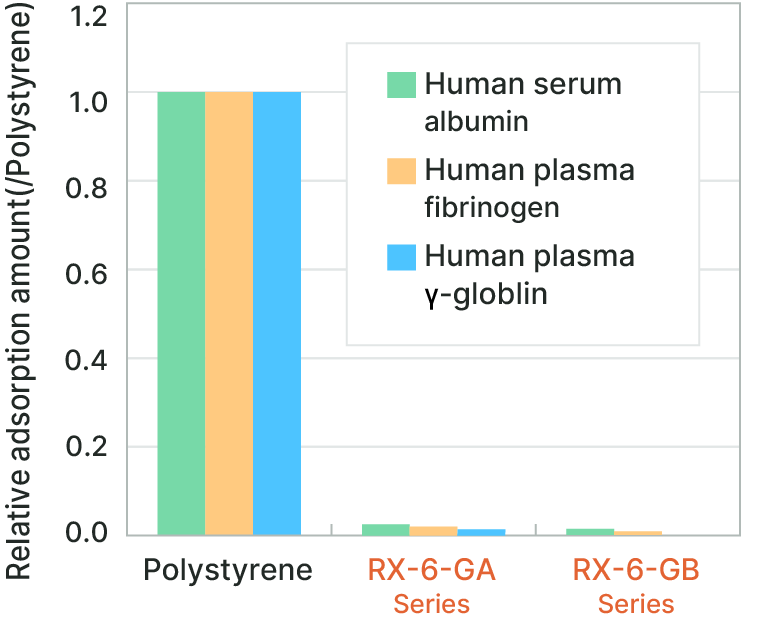
Inhibition of Microorganism Adhesion
Inhibits the adhesion of pathogens in various applications (water treatment, oral cavity, medical and health care applications, etc.).
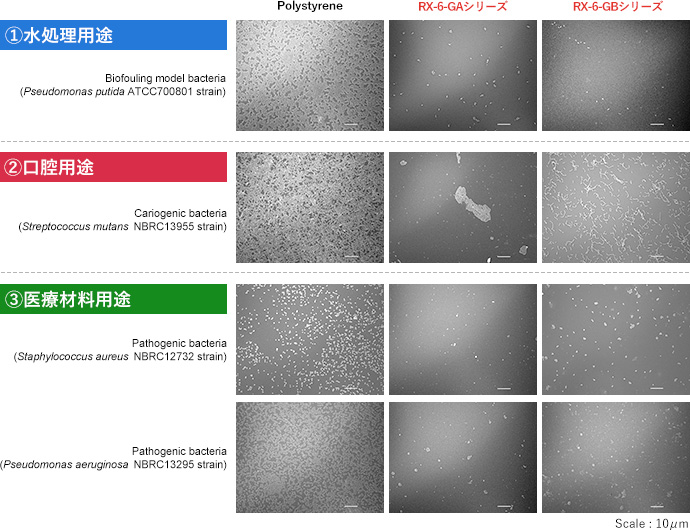
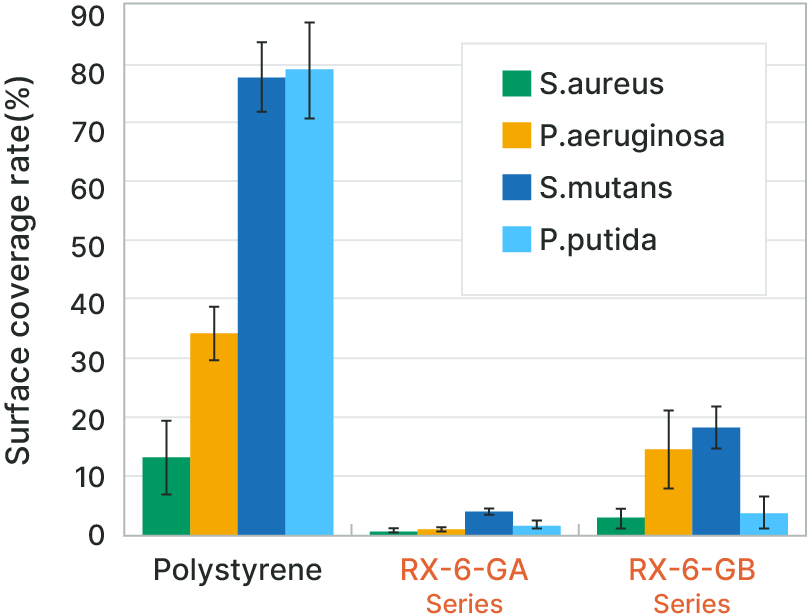
Control of Cellular Adhesiveness
Selecting the composition changes cellular adhesiveness, making it possible to control culture behavior.
Two-to-three-dimensional culture and suspension culture are possible for various cells.
It is also possible to have both antithrombogenicity and (tissue) cellular adhesiveness.
Endothelial cells and fibroblasts can be engrafted and propagated while maintaining antithrombogenicity.
(Day four of HepG2 culture (human hepatocellular tumor cells))
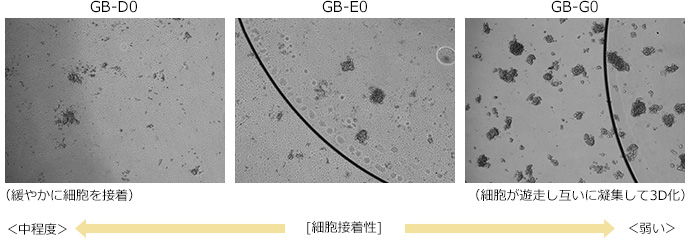
Basic Performance
| Item | Unit | RX-6-GA-I5 Reactive type (containing COOH groups) | RX-6-GB-E0 Hydrophobic group-containing copolymer type | Notes |
|---|---|---|---|---|
| Appearance | — | Clear and colorless | Colorless and transparent (slightly turbid) | Visual |
| Nonvolatile*1
0 (Aqueous solution) | 50 (Ethanol/Water) | 150°C for 30 minutes | ||
| Viscosity | mPa·s | Approx. 20 | Approx. 7,000 | E-type viscosity meter, 25°C |
| Weight Average Molecular Weight | — | Approx. 450,000 | Approx. 150,000 | GPC standard PSt conversion |
| Diluent Solvent | Ethanol, Isopropanol (Isopropyl alcohol), Acetone | ← | Visual | |
| Example of Crosslinking Conditions | EPOCROS™ WS7005phr 120°C for 30 minutes | — | Oxazoline-based Crosslinker (Nippon Shokubai product) | |
| Pencil Hardness | 2H | 3B max. | ||
| Water Resistance | Rubbing: No scuffing or tarnishing
Submersion in 60°C warm water: No change to appearance | Rubbing: Peeling occurs
Submersion in 60°C warm water: Whitening occurs | ||
| Contact angle | ° | 180° | 155° | Captive bubble method |
| Base Materials Adhesion
(Grid Peel Test) | No peeling against PET, PES, Glass | ← | PET: Polyethylene terephthalate
PES: Polyethersulfone |
Precautions
- This is a product in development, so please consider separately matters such as conformance to the laws, regulations, and types of standards related to usage.
- The data listed in this page are examples, and are not guarantees of performance.
- Please note that the contents (and specifications) listed in this page may be changed without prior notice.
- The Company does not take any responsibility whatsoever for any issues that may arise in relation to the usage of this product, including, but not limited to, that its use will not infringe upon the intellectual property rights of any third party.